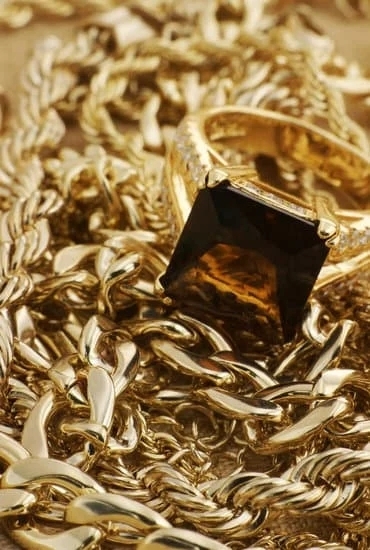The history of Native American jewelry dates back centuries and is deeply intertwined with the rich cultural traditions of various indigenous tribes across North America. From intricate silver and turquoise pieces to beaded necklaces and earrings, Native American jewelry encompasses a wide range of styles and techniques that reflect the artistic prowess of its creators. This article aims to delve into the origins, materials, symbolism, historical evolution, cultural significance, renowned artisans, and contemporary influence of Native American jewelry.
For centuries, different Native American tribes have practiced traditional jewelry-making techniques that are unique to their respective cultures. The art of crafting jewelry is not only a means of adornment but also serves as a representation of tribal identity, spirituality, and heritage. Through this exploration, we will trace the roots of traditional jewelry-making practices among various tribes and gain insight into the symbolism and meaning behind the designs and motifs found in Native American jewelry.
Furthermore, we will examine the materials and techniques used in creating these exquisite pieces, from the use of natural gemstones like turquoise and coral to intricate beadwork. Additionally, we will chart the historical evolution of Native American jewelry from its traditional forms to its contemporary styles, shedding light on how it has evolved over time while maintaining its cultural significance.
Origins of Native American Jewelry
The history of Native American jewelry dates back thousands of years, with each tribe having its unique tradition and style. Traditional jewelry-making practices have been an essential part of Native American culture, serving as a way to express individual and tribal identity. The origins of Native American jewelry can be traced to the ancient techniques and materials used by different tribes across North America.
The traditional jewelry-making practices among different Native American tribes varied based on their geographical location, cultural beliefs, and available resources. For example, the Navajo tribe is famous for their use of turquoise and silver in their jewelry, while the Zuni tribe is known for intricate stone inlay work. Similarly, the Hopi tribe is recognized for their use of symbols and designs representing their spiritual beliefs.
Materials and techniques used in creating Native American jewelry were often sourced from the natural environment. Tribes used a wide range of materials such as turquoise, shells, coral, precious metals like silver and gold, as well as various animal bones and hides. The techniques involved in crafting these pieces were passed down through generations and often included intricate methods such as stone carving, metal stamping, beadwork, and weaving.
The art of crafting Native American jewelry was not just about creating beautiful adornments but also carried deep symbolic meanings. Each design and motif used in the jewelry had specific cultural significance, reflecting tribal traditions, spiritual beliefs, and historical narratives. Understanding the symbolism behind these designs provides valuable insights into the rich cultural heritage of Native American tribes.
Materials and Techniques
Native American jewelry is a testament to the creativity and craftsmanship of indigenous artisans, who have been using unique materials and intricate techniques for centuries to create stunning pieces that reflect their cultural heritage. The art of jewelry-making among Native American tribes has a rich history that dates back thousands of years.
Materials used in crafting Native American jewelry vary depending on the region and the tribe’s traditions. Some common materials include:
- Turquoise
- Silver
- Coral
- Shell
- Bone
- Quill
These materials are often combined with specific techniques such as:
- Stamping
- Lapidary work
- Inlaying
The intricate craftsmanship involved in creating these pieces often involves a deep understanding of the natural properties of the materials and an intimate knowledge of traditional techniques passed down through generations.
One example of this is the use of turquoise, which holds great cultural significance for many Native American tribes. This beautiful stone is often shaped and polished by hand before being set into sterling silver settings, resulting in exquisite pieces that showcase both the natural beauty of the stone and the artisan’s skill.
It’s important to recognize that the history of native american jewelry isn’t just about creating beautiful adornments; it’s also about preserving cultural traditions and passing them down to future generations. By understanding the unique materials and intricate techniques used in crafting native american jewelry, we can gain a deeper appreciation for its cultural significance and artistic value.
Symbolism and Meaning
Native American jewelry is not only known for its stunning beauty and intricate craftsmanship, but also for the deep symbolism and meaning behind the designs and motifs. The use of symbols in Native American jewelry dates back centuries and holds cultural, spiritual, and historical significance for different tribes. These symbols often convey stories of creation, nature, spirituality, and tribal identity.
Sacred Animals and Nature
Many traditional Native American jewelry pieces feature designs of animals such as eagles, bears, wolves, and turtles, which hold sacred meanings within their respective tribal beliefs. For example, the eagle is a symbol of strength, courage, and wisdom in many Native American cultures. Similarly, the bear represents power, healing, and protection. These symbolic representations of animals are often intricately carved or etched into jewelry pieces to honor their spiritual significance.
Spiritual Elements
In addition to animal motifs, certain elements from nature carry spiritual significance in Native American jewelry. For instance, the sun symbolizes life-giving energy and abundance while the moon represents feminine energy and fertility. Both these elements can be found in various forms in traditional Native American jewelry pieces such as necklaces, earrings, bracelets, and rings.
These symbolism-rich designs not only add an aesthetic appeal to the jewelry pieces but also serve as a means of connecting to cultural heritage. Understanding the history of native american jewelry allows us to appreciate these intricately crafted pieces as more than just adornments; they are a reflection of indigenous beliefs and values that have been passed down through generations.
Historical Evolution
Native American jewelry has a rich and storied history that spans centuries. The evolution of Native American jewelry from traditional to contemporary styles reflects not only changes in fashion, but also shifts in cultural traditions and artistic practices. Understanding this evolution provides valuable insights into the dynamic nature of Native American artistry.
Traditional Designs and Techniques
Historically, traditional Native American jewelry was crafted using materials such as turquoise, silver, coral, and various semi-precious stones. The designs often featured intricate patterns and motifs inspired by nature, tribal symbols, and spiritual beliefs. Techniques like silversmithing, beadwork, and intricate metal stamping were passed down through generations, with each tribe developing its own distinctive style.
Modern Adaptations and Innovations
As time passed and cultural exchanges occurred between Native American tribes and non-Indigenous communities, the art of jewelry-making underwent significant transformations. Contemporary Native American artisans began incorporating modern materials such as gold and platinum into their creations while experimenting with innovative techniques like laser-cutting and 3D printing. This infusion of new methods alongside traditional practices resulted in a vibrant blend of old and new within the world of Native American jewelry.
Preservation of Cultural Heritage
Despite these innovations, many contemporary Native American jewelers remain deeply committed to preserving their cultural heritage. They continue to honor ancestral techniques and design elements while infusing their work with symbolism that reflects the enduring spirit of their communities. By doing so, they ensure that the legacy of Native American jewelry endures as a treasured expression of Indigenous identity and creativity throughout the ages.
Role in Native American Culture
Native American jewelry has played a significant role in the cultural heritage and traditions of various indigenous tribes throughout history. From adornment in daily life to ceremonial use, jewelry holds a deep significance in Native American culture. In tribal ceremonies and rituals, jewelry is often worn as a symbol of spiritual beliefs, status, and identity.
It serves as a tangible representation of the connection between individuals and their tribal heritage, ancestors, and the natural world. The crafting and wearing of jewelry also hold social and ceremonial significance within Native American communities.
The history of native american jewelry shows that different tribes have distinct styles, materials, and techniques when it comes to creating jewelry for ceremonial purposes. For instance, Navajo culture features intricate silverwork adorned with turquoise and coral stones, while Hopi artisans are known for their overlay technique using sterling silver to create intricate patterns and designs representing ceremonial symbols.
In addition to intricate metalwork, indigenous tribes such as the Zuni are acclaimed for their use of intricate stone inlay work that feature detailed symbolic designs.
Apart from ceremonial use, native american jewelry also holds importance in everyday life within these communities. As part of traditional attire or regalia for men and women, jewelry is worn not only for aesthetic purposes but also as a reflection of individual identity within the tribe. Specific pieces may hold personal meaning or be passed down through generations, symbolizing familial ties and connections to ancestral traditions.
Ultimately, the role of jewelry in native american culture extends far beyond mere ornamentation; it is an integral part of tribal identity, spirituality, and heritage that continues to thrive in modern times.
| Role in Native American Culture | Data |
|---|---|
| Significance in Ceremonies | Jewelry serves as a symbol of spiritual beliefs, status, and identity |
| Tribal Variations | Different tribes have distinct styles such as Navajo’s silverwork with turquoise and coral stones |
| Everyday Importance | Jewelry reflects individual identity within the tribe and familial ties |
Famous Native American Jewelry Artisans
One of the most fascinating aspects of the history of Native American jewelry is the craftsmanship and artistry of the renowned artisans who have made significant contributions to this unique form of artistic expression. Throughout history, there have been individuals from various Native American tribes who have mastered the intricate techniques and traditional methods of creating stunning pieces of jewelry that carry deep cultural significance.
These artisans have not only preserved the rich heritage of their respective tribes but have also played a pivotal role in shaping the evolution of Native American jewelry.
Among these talented artisans is Charles Loloma, a Hopi jeweler whose innovative approach revolutionized the world of Native American jewelry. Loloma’s use of unconventional materials and bold designs broke away from traditional norms, earning him international acclaim and recognition. His pioneering spirit inspired a new generation of Native American jewelry artists to push boundaries and experiment with different styles, leading to a renaissance in contemporary Native American jewelry.
Another notable figure in the history of Native American jewelry is Jesse Monongya, a Navajo jeweler known for his exceptional skill in creating intricate inlay designs. Monongya’s unique blend of traditional techniques with modern aesthetics has set him apart as one of the most influential artisans in the field. His work reflects a deep understanding of symbolism and storytelling, capturing the essence of Navajo culture in each exquisitely crafted piece.
The legacy of these and many other talented artisans continues to reverberate through the world of Native American jewelry, inspiring both indigenous artists and non-indigenous admirers to appreciate and honor this rich cultural heritage. Their dedication to preserving tradition while embracing innovation ensures that the history of Native American jewelry remains vibrant and relevant in contemporary times.
Influence on Contemporary Fashion
In conclusion, the history of Native American jewelry is a testament to the rich cultural heritage and artistic traditions of various indigenous tribes. The origins of traditional jewelry-making practices among different Native American tribes showcase the deep connection between their artistry and natural resources, as seen in the use of materials such as turquoise, silver, and feathers. The intricate techniques used in creating these pieces highlight the craftsmanship and skill passed down through generations.
Moreover, the symbolism and meaning behind the designs and motifs in Native American jewelry offer a glimpse into the spiritual beliefs and values of indigenous cultures. From animal totems to geometric patterns, each piece carries stories and traditions that have been preserved over time. As these jewelry styles have evolved from traditional to contemporary forms, they continue to play a significant role in tribal ceremonies, rituals, and everyday life within Native American communities.
Furthermore, the influence of Native American jewelry on modern-day fashion cannot be understated. While it has inspired countless designers and fashion trends, it is crucial to recognize the importance of cultural appropriation awareness.
By acknowledging and honoring the origins of these beautiful art forms, we can celebrate their legacy while also respecting their cultural significance. It is essential for us to engage with Native American communities with respect and understanding as we continue to appreciate and draw inspiration from their timeless jewelry traditions.
Frequently Asked Questions
What Kind of Jewelry Did Native American Wear?
Native Americans wore a variety of jewelry, including necklaces, bracelets, earrings, and rings. These were often made from materials like turquoise, silver, shells, and animal bones. The jewelry was not just decorative but also held cultural and spiritual significance.
Who Is the Most Famous Native American Jewelry Maker?
One of the most famous Native American jewelry makers is Charles Loloma, a Hopi artist known for his innovative designs and use of non-traditional materials in his jewelry. His work has been exhibited in museums and art galleries around the world.
What Is the History of Native American Beads?
The history of Native American beads dates back thousands of years. Before the arrival of Europeans, Native Americans primarily used natural materials like shells, stones, and animal bones to create beads.
With the introduction of trade with Europeans, glass beads became more prominent in Native American beadwork. Today, beadwork continues to be an important aspect of Native American art and culture.

Welcome to my jewelry blog! My name is Sarah and I am the owner of this blog.
I love making jewelry and sharing my creations with others.
So whether you’re someone who loves wearing jewelry yourself or simply enjoys learning about it, be sure to check out my blog for insightful posts on everything related to this exciting topic!





